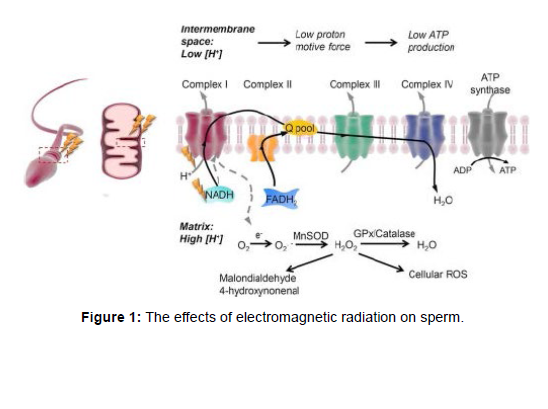The Impact of Radiofrequency Radiation on Reproductive Wellbeing: Separating Fact from Fiction
Received: 05-Aug-2023 / Manuscript No. roa-23-111341 / Editor assigned: 07-Aug-2023 / PreQC No. roa-23-111341 (PQ) / Reviewed: 21-Aug-2023 / QC No. roa-23-111341 / Revised: 24-Aug-2023 / Manuscript No. roa-23-111341 (R) / Published Date: 31-Aug-2023 DOI: 10.4172/2167-7964.1000480
Image Article
In our increasingly connected world, concerns about the potential health effects of radiofrequency (RF) radiation have gained significant attention. One area of concern is its potential impact on reproductive wellbeing. As our reliance on wireless devices grows, it’s essential to examine the scientific evidence to better understand the relationship between RF radiation and reproductive health.
Understanding radiofrequency radiation
Radiofrequency radiation is a type of non-ionizing radiation that is emitted by various wireless communication devices, such as cell phones, Wi-Fi routers, and Bluetooth devices. It’s important to note that RF radiation falls within the non-ionizing part of the electromagnetic spectrum, meaning it lacks the energy to directly damage DNA or cause cell mutations, as opposed to ionizing radiation like X-rays and gamma rays.
The reproductive wellbeing concerns
The concerns about RF radiation and reproductive wellbeing stem from the potential for this type of radiation to generate heat in body tissues. Prolonged exposure to high levels of heat can impact the health of reproductive organs, especially in males [1]. Some studies have suggested a potential link between prolonged exposure to high levels of RF radiation and a decrease in sperm quality, sperm motility, and sperm count. However, these findings are not consistent across all studies, and the overall evidence remains inconclusive.
Scientific studies and findings
Research into the potential impact of RF radiation on reproductive wellbeing has yielded mixed results. Some studies have reported an association between cell phone use and reduced sperm quality, while others have not found any significant effects. For instance, a review of several studies published in the journal “Fertility and Sterility” concluded that there is limited evidence to support a strong link between RF radiation exposure and male infertility.
Additionally, the World Health Organization (WHO) conducted a comprehensive review of the available scientific literature and concluded that the overall evidence does not establish a clear link between RF radiation exposure from wireless devices and adverse effects on reproductive health [2].
As of now, the scientific community has not reached a consensus on the direct impact of RF radiation from wireless devices on reproductive wellbeing. While some studies suggest a possible link between RF radiation exposure and decreased sperm quality, the overall evidence is not robust enough to definitively establish a causal relationship. It’s essential to continue conducting rigorous research to better understand any potential risks (Figure 1).
In the meantime, individuals concerned about their reproductive health can take practical steps, such as using hands-free options for phone calls and maintaining a safe distance from wireless devices when not in use. As technology continues to evolve, ongoing research will play a crucial role in providing a clearer understanding of the effects of RF radiation on reproductive wellbeing.
Acknowledgement
None
Conflict of Interest
None
References
- Iuliis GND, Newey RJ, King BV, Aitken RJ ( 2009) Mobile phone radiation induces reactive oxygen species production and DNA damage in human spermatozoa in vitro. PLoS One 4: e6446.
- Gavriliouk D, Aitken RJ (2015) Damage to Sperm DNA Mediated by Reactive Oxygen Species: Its Impact on Human Reproduction and the Health Trajectory of Offspring. Adv Exp Med Biol 868: 23-47.
Indexed at, Google Scholar, Crossref
Citation: Patel P (2023) The Impact of Radiofrequency Radiation on ReproductiveWellbeing: Separating Fact from Fiction. OMICS J Radiol 12: 480. DOI: 10.4172/2167-7964.1000480
Copyright: © 2023 Patel P. This is an open-access article distributed under theterms of the Creative Commons Attribution License, which permits unrestricteduse, distribution, and reproduction in any medium, provided the original author andsource are credited.
Select your language of interest to view the total content in your interested language
Share This Article
Open Access Journals
Article Tools
Article Usage
- Total views: 1474
- [From(publication date): 0-2023 - Nov 21, 2025]
- Breakdown by view type
- HTML page views: 1144
- PDF downloads: 330

